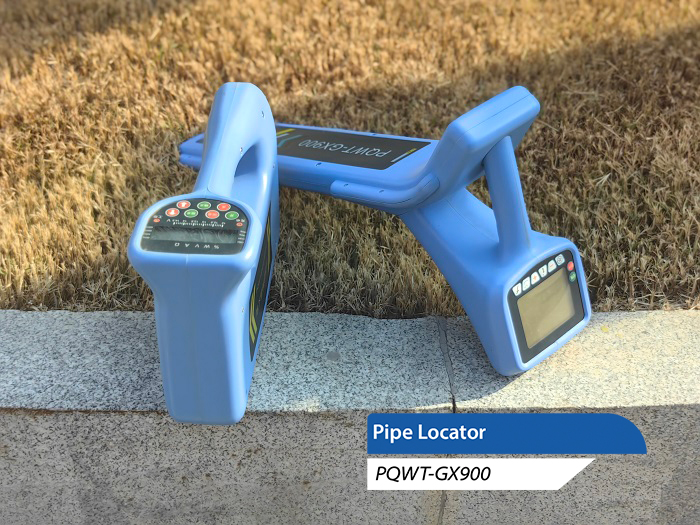With the continuous advancement of urban development and infrastructure construction, the density and complexity of underground pipelines are increasing. In the process of pipeline construction, maintenance and remodeling, it is crucial to accurately understand the location, direction and condition of the pipelines. The following will introduce different categories of PQWT Pipe Cable Locator pipeline detection methods and their applications.

1. Water Supply and Drainage Lines
Water supply and drainage pipelines include metallic and non-metallic pipelines. For metallic pipelines, inductive method and direct connection method are common PQWT Pipe Cable Locator detection methods. The inductive method uses a PQWT Pipe Cable Locator sensor to sense alternating electromagnetic fields on the line to locate and determine depth. The Direct Connection method connects the detector directly to the metallic pipe line and detects it by conduction. For non-metallic pipelines, geological radar can be used for detection, or brazing and excavation methods can be used to confirm the location and depth of pipelines.
2. Communication pipeline
The communication pipeline covers the pipelines of telecom, Unicom, mobile and other right units, and the burial method generally includes direct burial, pipe burial and trench burial. For telecommunication pipelines, the clamp method is a common detection method. Clamp method is by clamping the detector on the pipeline, using the PQWT Pipe Cable Locator pipeline and the crust of the loop relationship between the detection, suitable for smaller diameter pipelines.
3. Power Pipelines
The common detection method for power pipelines is the PQWT Pipe Cable Locator clip induction method. Clip induction method through the induction transmitter in the pipeline above the alternating electromagnetic field, the use of inductive coupling between the pipeline and the earth's crust to locate and determine the depth. This method has high detection accuracy and anti-interference ability, and is suitable for the detection of electric power pipelines.
4. gas pipeline
Gas pipelines can be divided into metal pipelines and non-metallic pipelines. For metal pipelines, you can use induction method or PQWT Pipe Cable Locator clamp method for detection. The induction method utilizes the alternating electromagnetic field generated by the induction transmitter and receives the electromagnetic field on the pipeline through the induction coil to realize the positioning and depth determination of the pipeline. For non-metallic pipelines, geo-radar is a commonly used detection tool.
5. Thermal pipeline
Thermal pipelines are generally made of steel pipe, for which the instrument has better signal transmission.PQWT Pipe Cable Locator Direct method, induction method and clamp method can be used for the detection of thermal pipelines. The direct and inductive methods detect pipelines by generating alternating electromagnetic fields. The clamp method is suitable for small diameter pipelines.
6. Industrial pipelines
Industrial pipelines include petroleum, acid, alkali and other pipelines, the safety of which requires special attention. For metallic pipelines, PQWT Pipe Cable Locator induction method is commonly used for detection; non-metallic pipelines can be detected using geo-radar.
PQWT Pipe Cable Locator, as an important tool, provides accurate location and condition information, and also helps in the management and maintenance of pipelines.








